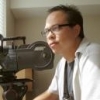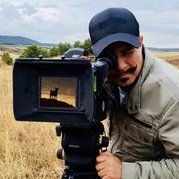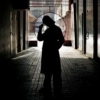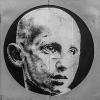-
Posts
102 -
Joined
-
Last visited
Profile Information
-
Occupation
Director
-
Location
Vancouver, Canada
-
My Gear
Arri 416 Plus
Recent Profile Visitors
7,144 profile views
-
To be fair, I believe there's also some visual effects involved in shots like this, as I read that they digitally added a number of buildings into the skyline to add to the futuristic setting, so some of that bokeh is simulated.
-

Shooting and processing 35mm in Vancouver, BC
Jeff L'Heureux replied to Alex Birrell's topic in Film Stocks & Processing
MELS in Montreal is great. I used them the last time I shot film in Vancouver, and FedEx'd the negative over there with no fear of it being x-rayed at all since it never crossed a border. -

Kodak Vision3 16mm stock characteristics
Jeff L'Heureux replied to Stephen Perera's topic in General Discussion
I've handed over the sales/distribution end of things to the sales agent who bought the rights to both of my films at last year's AFM. They did just sell my first feature 'Shadow of the Lotus' in its first territory this past week, so hopefully 'Wandering Hearts' will be available to be seen in some capacity soon. I'll post about it here if/when that happens. In the mean time, there are a few select clips from the film you can see on Vimeo. All of these clips in particular were shot on Kodak 7203 50D in various conditions. Cheers! Clip 01 (Mont St. Michel dancing): vimeo.com/165077527/4bedc36aab Clip 02 (under the stars): vimeo.com/184452026/68e1044e10 Clip 03 (Mont St. Michel photos): vimeo.com/184474566/c1859d6e87 Clip 04 (Eiffel Tower): vimeo.com/184635390/f083b126b9 Clip 05 (Cafe meeting): vimeo.com/184754702/a0b1bfb92c -

Kodak Vision3 16mm stock characteristics
Jeff L'Heureux replied to Stephen Perera's topic in General Discussion
Aww, thanks guys, making me blush. If I could go back I would've absolutely rented some Vantage Hawk V-Lite 16's and shot it anamorphic since the bulk of production was done in Paris right where they have headquarters. It didn't occur to me until after production though. -

Kodak Vision3 16mm stock characteristics
Jeff L'Heureux replied to Stephen Perera's topic in General Discussion
My last feature was shot on super16 using 50D, 250D and 500T. All day exteriors were shot on 50D rated a full two stops over, day interiors were shot on 250D also rated two stops over but filmed using only natural light from windows and bounce, and the few night exteriors were shot on 500T rated normally. The trailer also features some day for night on 50D with visual effects involved. You can get a taste of what 50D looks like overexposed two stops in all of the daytime footage in this trailer: https://vimeo.com/152268039 I personally love the look from the overexposure. It further reduced the grain and still never clipped any of the highlights. -
The cassettes made the camera super convenient, as you could hot swap them even if they're partially shot as there's no direct threading in the camera body itself. Also, since it uses 100' daylight spools, you can load in low light as opposed to total darkness. The only real downside is the cassettes can be a little noisy when filming, and there is occasionally some intermittent film base scratching as was common when you look at footage from those 16mm cameras from the 1950's. It was rare though and never ruined footage. Heck, nowadays kids are using digital effects to add scratches and grain like that!
-
Wow, we sure could've used this manual years ago when I owned two of these cameras. We ordered them off of eBay from Russia, and we had to take it to Whites in Vancouver where we all marveled over it and the techs literally tinkered with it until we figured out how to load the film and operate it for the first time. It's pretty intuitive though, we figured it out quickly. I've since resold them both but they were rugged and worked great. My first feature was shot using two of these cameras and their lenses for a vintage look. We used Fuji's Eterna Vivid 500 for everything but the daytime shots. Here's what the camera and its lenses look like: https://vimeo.com/157962480
-

Monitor for Arri 416
Jeff L'Heureux replied to Veronika Kravchenko's topic in Directors and Directing
There is a pesky iris dial kind of hidden on the bottom of the Integrated Video System of the 416, and not immediately apparent to the naked eye. When I first used a monitor with it, the screen was black because the iris was fully stopped down until I found the dial. Look for the dial and play with it to make sure it's open. Here's a pic of the diagram to the dial. http://imgur.com/a/SC2CF -

How can i achieve this shot??
Jeff L'Heureux replied to Markus Dakwar's topic in Camera Operating & Gear
A jib arm would get the job done, or perhaps a really steady drone flying straight up. -
Lately, I've been watching ProRes files using DaVinci Resolve. It seems to not have the color/brightness shifts that I've noticed when opening the same files with quicktime or VLC, at least for me.
-
SOLD Thank you.
-
Terrence Malick seems to be an expert on staying unseen and getting away with it.
-
The graded footage looks fine to me. Maybe slightly overexposed, but you didn't lose too much details and it looks like film should/would look, ie: very nice. The lens and stop you shoot at can also affect the contrast/exposure, of course, but this is pretty much exactly what I'd expect Bolex 16mm footage to look like.
-
Updated and reduced price from earlier this year. I currently have a small inventory of factory sealed cans of Kodak 16mm negative in storage in France. I had planned to shoot it myself, but the need is no longer there, so I'm willing to sell it at a discount. If you're interested, and located anywhere in Europe, it would be easy for me to ship it. I have in proper storage: 9 brand new sealed 400' cans of 7203 50D 1 brand new sealed 400' can of 7207 250D 200ft shortend of 7219 500T 100ft shortend of 7203 50D 240ft shortend of 7203 50D The new cans are 70 euros each and assuming someone wants to buy alll 10 cans I'll throw in all of the shortends for free. You have my guarantee they are just as shootable though. The shortends where made at the end of shooting days when film was still remaining in the camera mag but it needed to be loaded with a different stock for the following day. The rolls were cut with scissors in a changing bag and put back in their cans, still on a core. To reiterate: - 70€ / can (preferably would like all 10 purchased) + shipping Message me if interested.
-
Getting 16mm to look "more like 35mm" as you say comes down to the camera, lenses, film stock, and lighting. Your best chance would be to use a professional grade super16 camera like an Arri or Aaton, a good set of lenses, and proper lighting. The great thing about 16mm is that its looks can vary wildly across the same overall format. You can have an image that looks more like super8 home footage all the way up to an image that can be mistaken for 35mm by general audiences.






